There are many different types of RVs on the market these days. From small, compact trailers to sprawling motorhomes, there is an RV for just about anyone. And with such a wide variety of vehicles to choose from, it’s no wonder that people often have questions about the features and amenities each one offers. One question that comes up frequently is whether or not you can put a regular toilet in an RV. Let’s take a closer look at this topic and find out what your options are.
Table of Contents
Why installing a regular toilet on your RV is a very bad idea
If you’ve ever been on an RV trip, then you know that one of the most important things to consider is how you’re going to take care of your personal hygiene needs. After all, you are essentially living in a moving vehicle, so it’s important to have a plan for dealing with things like using the restroom. Many people wonder if they can just install a regular toilet in their RV, but this is actually a very bad idea. Here’s why:
First of all, RVs are not designed for regular toilets. The plumbing in an RV is quite different from what you would find in a typical home bathroom. In order to accommodate the smaller space and the movement of the vehicle, RVs have special holding tanks for waste and water. These tanks are connected to the plumbing system, which is designed to empty them when necessary. If you were to install a regular toilet in your RV, it would not be able to connect to these tanks properly and would therefore not work correctly.
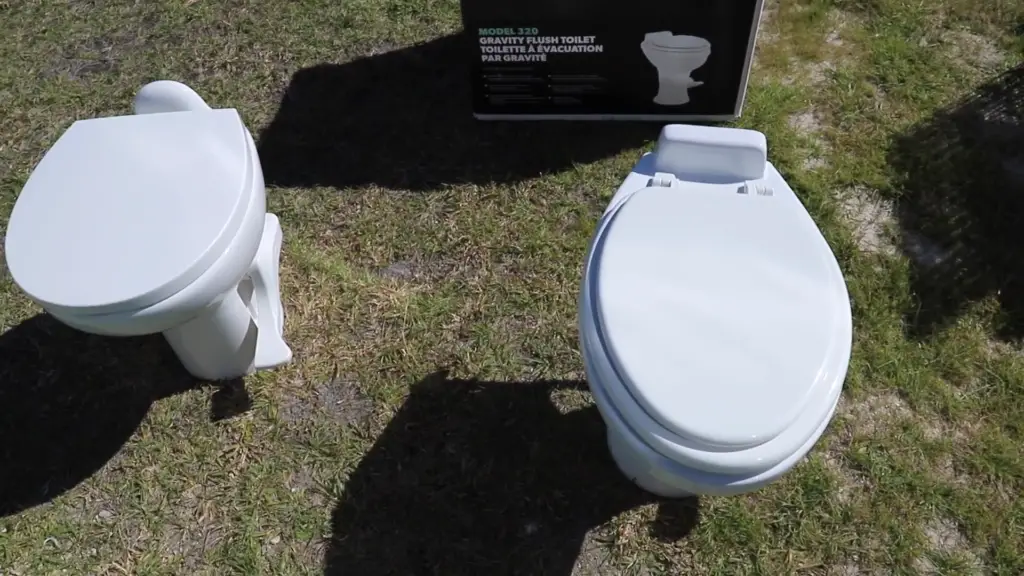
Secondly, even if you could somehow manage to get a regular toilet installed in your RV, it would be extremely uncomfortable to use. Remember, RVs are small spaces and there is often little room to move around. This means that you would likely have to sit very close to the toilet, which would be cramped and uncomfortable. Not only that, but the movement of the RV while you’re trying to use the restroom could make for a very unpleasant experience. [1]
Materials and Construction
This material is lightweight and easy to clean, which makes it a good choice for an RV toilet. Some higher-end models may be made from ceramic or porcelain, but these are usually not necessary unless you’re looking for a specific aesthetic. As far as construction goes, RV toilets are typically very simple. They usually consist of just a bowl and a seat, with a lid that seals shut when not in use. There may also be a small storage area beneath the seat for things like toilet paper and cleaning supplies.One thing to keep in mind when shopping for an RV toilet is that you’ll need to choose one that is the right size for your vehicle. RV toilets come in both standard and compact sizes, so be sure to measure your space before making a purchase. You’ll also want to make sure that the model you choose has the right type of flushing system for your needs. Some models have a foot pedal that you press to flush, while others have a lever that you pull. There are even some models that require you to pour water into the bowl in order to flush, so be sure to read the product descriptions carefully before making your final decision.
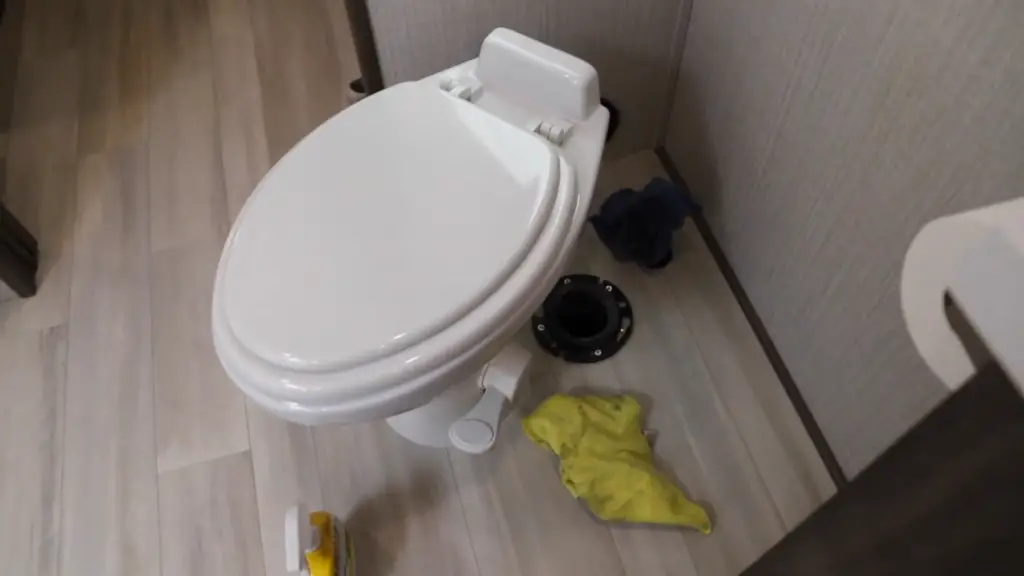
The Holding Tank
As we mentioned earlier, one of the most important parts of an RV toilet is the holding tank. This is where all of your waste will go when you use the restroom, and it’s important to choose a model that has a tank that is large enough to accommodate your needs.
Another thing to keep in mind is that you’ll need to have a way to empty your holding tank when it gets full. This can be done either by using a hose to connect the tank to a dump station, or by emptying it into an approved container. If you’re planning on doing a lot of dry camping, you may want to choose a model that has an internal macerator pump. This type of pump grinds up waste so that it can be easily emptied into an approved container.
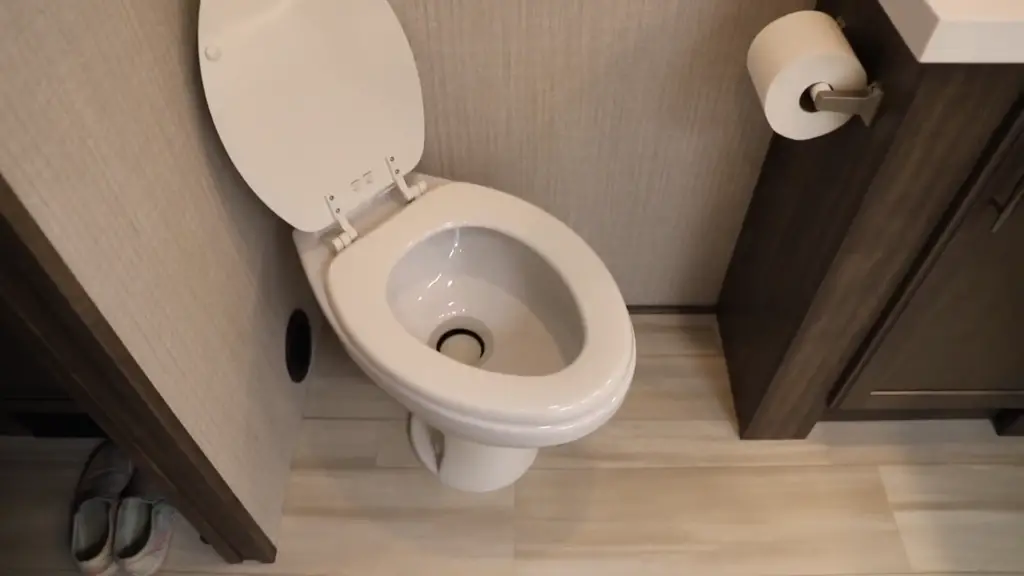
Water Usage
Another important consideration when choosing an RV toilet is water usage. Because RVs have limited space, it’s important to choose a model that uses as little water as possible. Many RV toilets use only a small amount of water each time they are flushed, and some models even have special features that help to conserve water. One such feature is a dual-flush system, which allows you to choose between a full flush for solid waste and a partial flush for liquid waste. This can save you a significant amount of water over the course of your trip.
If you intend to camp without running water, you should research composting toilets. Waterless toilets are environmentally friendly because they don’t require any water to operate. Composting toilets don’t require any Sewage, Hookups, or connections and instead transform waste into a compost that can be used as fertilizer.
No matter what type of RV toilet you choose, it’s important to make sure that you understand how it works before your first trip. This will help to ensure that you have a positive experience and avoid any stressful situations. If you have any questions about choosing the right model for your needs, be sure to consult with a professional before making your final decision. With a little bit of research, you should be able to find the perfect RV toilet for your next adventure.
Exceptions
There are a few exceptions to the rule that you can’t put a regular toilet in an RV.
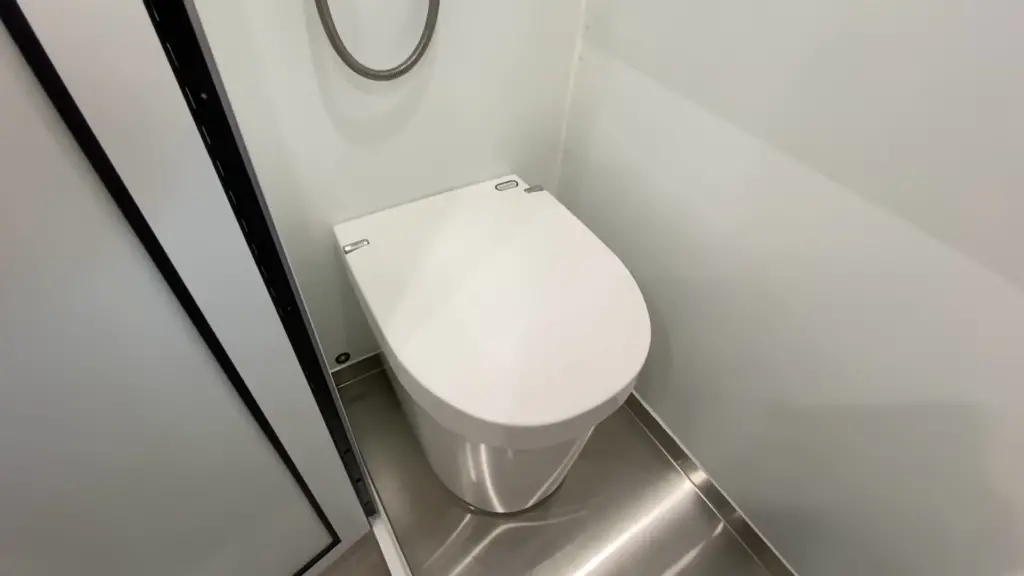
Alternatives
If you’re determined on having a regular toilet in your RV, there are a few options to choose from. A portable toilet, which may be used inside your RV or outside, is another alternative. RV toilets tend to be more expensive than the typical toilet, and they can be a pain to empty and clean. However, these toilets are much less expensive and easier to manage. Another option is to use an incinerating toilet, which burns waste instead of storing it in a holding tank. These types of toilets are more expensive than other options, but they don’t require any special hookups or connections. Finally, you could always choose to use a chemical toilet, which uses chemicals to break down waste.
Ceramic Upgrade Toilets
If you have a bigger RV, then you might be able to put in a regular toilet with no problem. The size of the RV will ultimately determine what types of toilets can be installed inside. Standard toilets need around 25” x 19” of space while compact toilets can get by with as little as 20-25” x 17”. If your RV is on the larger side, then you have more options when it comes to putting in traditional toilets. However, these require special hookups that aren’t always available in all RVs.
An alternative to regular toilets are ceramic upgrade toilets. These are essentially standard toilets that have been designed for RVs. They come with all of the necessary hookups and don’t require any special connections. Ceramic upgrade toilets are a great option if you’re looking for a traditional toilet without all of the hassle. [2]
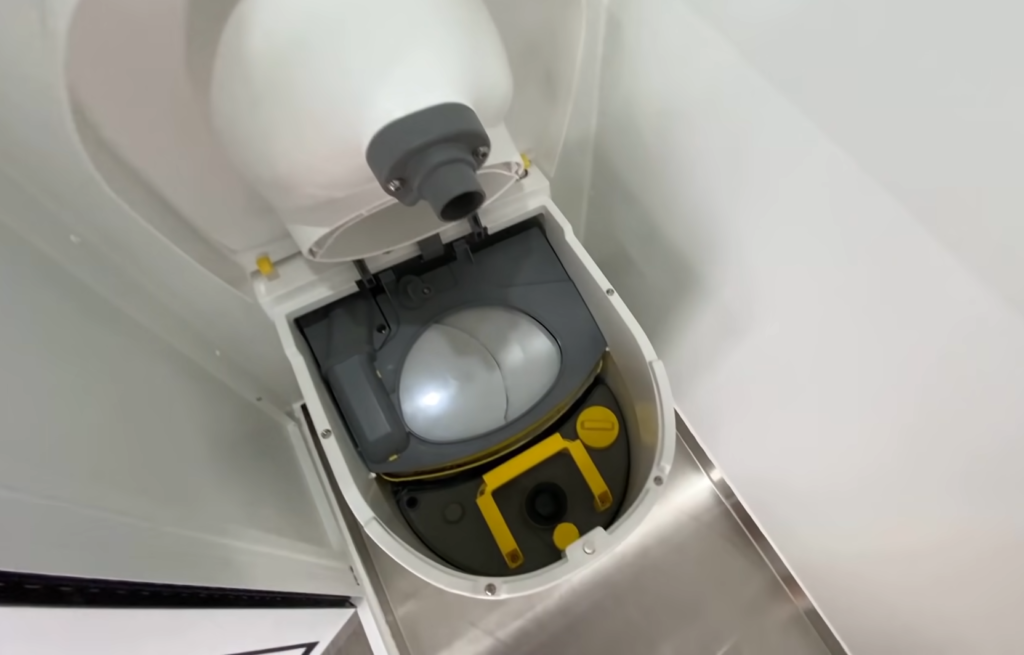
Composting Toilets
If you’re looking to be more eco-conscious, composting toilets are a fantastic solution. This sort of toilet uses virtually no water, which is fantastic for the environment. Composting toilets are environmentally friendly because they break down human waste into compost that can be used as fertilizer. Plus, you don’t need any extra connections or Hookups for a composting toilet – making them easier to use than traditional toilets.
If you’re planning on doing a lot of dry camping, you may also want to consider investing in a composting toilet. These types of toilets don’t use any water at all, and they can be a great way to reduce your impact on the environment. Composting toilets work by breaking down waste into a compost that can be used as fertilizer, and they don’t require any special hookups or connections.
If you’re interested in doing your part for the planet, investing in a composting toilet is a great place to start. [3]Portable Toilets
If you’re set on having a regular toilet in your RV, there are a few alternatives that you can consider. One option is to install a portable toilet, which can be used inside of your RV or outside. These toilets are typically much less expensive than traditional RV toilets, and they’re easy to empty and clean. Additionally, portable toilets don’t require any special hookups or connections, which makes them a great option for those who want a traditional toilet without all of the hassle.
Portable toilets are a great way to get all of the benefits of a regular toilet without any of the drawbacks. If you’re looking for an affordable and easy-to-use option, investing in a portable toilet is definitely worth considering. [4]
Reasons Why a Regular Toilet Won’t Work in an RV
There are a few obstacles to installing a standard toilet in your RV. Because RVs have less bathroom space than permanent structures, a regular toilet may not be sufficient. This is the first obstacle you might face. RVs typically don’t have the same types of plumbing hookups as homes, so you might not be able to connect a regular toilet directly to the RV’s plumbing. Many RVs come with holding tanks that are specifically designed to hold waste from chemical toilets. It’s highly unlikely that you’ll be able to successfully convert a regular toilet into an RV with one of these tanks.
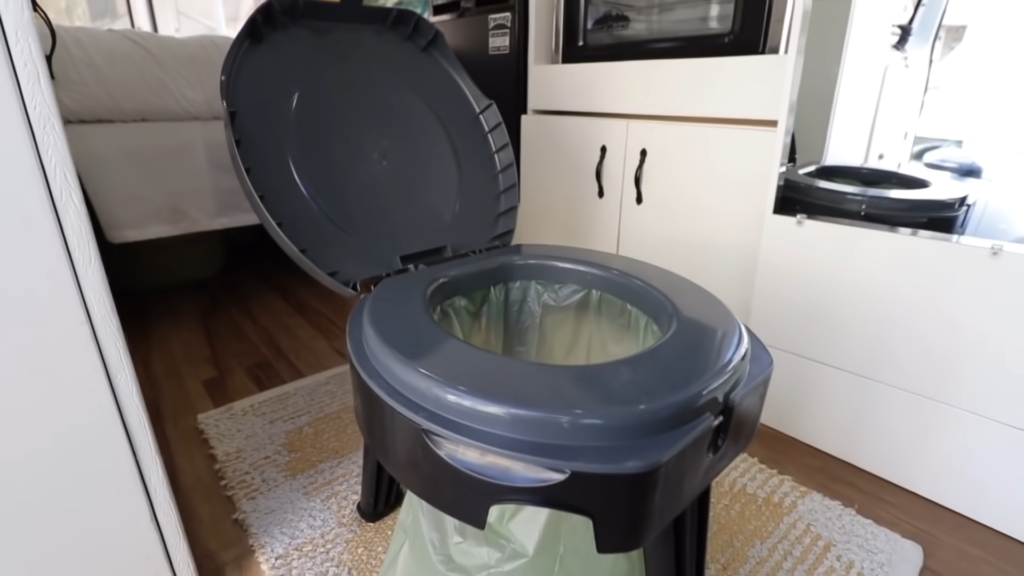
If you want to add a regular toilet to your RV, there are several things to think about before you make the change. However, if you’re willing to put in the work, it is possible to install a regular toilet in an RV. Just be sure to do your research and talk to an expert before you make any decisions.
When you use a portable toilet, you don’t have to worry about any of the disadvantages that come with regular toilets. Investing in a portable toilet is definitely worth considering if you’re searching for an inexpensive and simple solution. [5]
Standard Toilets Weigh A Lot More
One of the main reasons why you might not be able to put a regular toilet in your RV is because they typically weigh a lot more than RV toilets. This is important to consider because RVs have limited space, and adding a lot of weight can throw off the balance of the vehicle. Additionally, many RVs don’t have very strong floors, so a heavier toilet could end up damaging the RV. If you’re interested in putting a regular toilet in your RV, it’s definitely something to keep in mind.
RV Toilets Help with Unpleasant Smells
Another reason why you might not be able to put a regular toilet in your RV is because they often don’t do a very good job of masking unpleasant smells. This can be a big problem if you’re trying to use the RV bathroom in close quarters, like when you’re camping with other people. RV toilets are specifically designed to help with this issue, so it’s definitely something to keep in mind if you’re considering putting a regular toilet in your RV.
Portable toilets are a great way to get all of the benefits of a regular toilet without any of the drawbacks. If you’re looking for an affordable and easy-to-use option, investing in a portable toilet is definitely worth considering.
RV Toilets are Designed to Use Less Water
Another advantage of RV toilets is that they’re designed to use less water than regular toilets. This is important because RVs have limited water capacity, so you need to be mindful of how much water you’re using. Additionally, using less water can help you save money on your RV’s utility bills. [6]
Installation of a Regular Toilet is Far More Complicated
Finally, another reason why you might not be able to put a regular toilet in your RV is because the installation process is far more complicated. RVs often don’t have the same type of plumbing hookups that homes do, so you’ll need to be very careful when connecting the toilet to the RV’s plumbing system. Additionally, many RVs come with holding tanks that are designed for waste from chemical toilets. If you try to put a regular toilet in an RV that has one of these tanks, it could cause serious damage.
FAQ
Can you flush regular toilet paper in an RV?
Yes, you can flush regular toilet paper in an RV. However, it’s important to note that some types of toilet paper are designed specifically for use in RVs.
How often do you need to empty a motorhome toilet?
How often you need to empty a motorhome toilet depends on how much it’s used. Generally, you’ll need to empty the tank every few days. However, if the toilet is used frequently, you may need to empty it more often.
Can I put bleach in my black water tank?
Yes, you can put bleach in your black water tank. However, it’s important to use a diluted solution of bleach so that it doesn’t damage the tank. Additionally, you’ll need to add additional water to the tank after adding the bleach so that it can properly flush out the system.
Can I drive with a full black tank?
Yes, you can drive with a full black tank. However, it’s important to make sure that the tank is properly vented so that there isn’t any buildup of pressure. Additionally, you’ll want to avoid driving for long periods of time with a full tank so that the waste doesn’t have a chance to build up and cause an odor.
Where can I empty my motorhome toilet?
You can empty your motorhome toilet at most campgrounds and RV parks. Additionally, there are many dump stations located across the country that are designed for RVs. You can find a list of dump stations here.
Useful Video: The BEST TOILET For Van Life??? Hint: not composting
Conclusion
So, can you put a regular toilet in an RV? The answer is yes, with a few caveats. You’ll need to make sure the dimensions of the RV and the toilet match, that there is enough ventilation for the plumbing and septic tanks, and that your RV has access to water and sewer hookups. If all of those things are possible, then installing a regular toilet in your Recreational Vehicle will give you added convenience on the road. Have you tried this or another DIY project while camping? Let us know in the comments below!
References
- https://lifeonroute.com/cant-replace-an-rv-toilet-with-a-house-toilet/
- https://expertworldtravel.com/best-rv-toilet/
- https://www.gardeningknowhow.com/composting/ingredients/composting-toilets.htm
- https://en.wikipedia.org/wiki/Portable_toilet
- https://www.jeffsetter.com/can-you-replace-an-rv-toilet-with-a-regular-toilet/
- https://rvprofy.com/how-much-water-does-an-rv-toilet-use-per-flush/

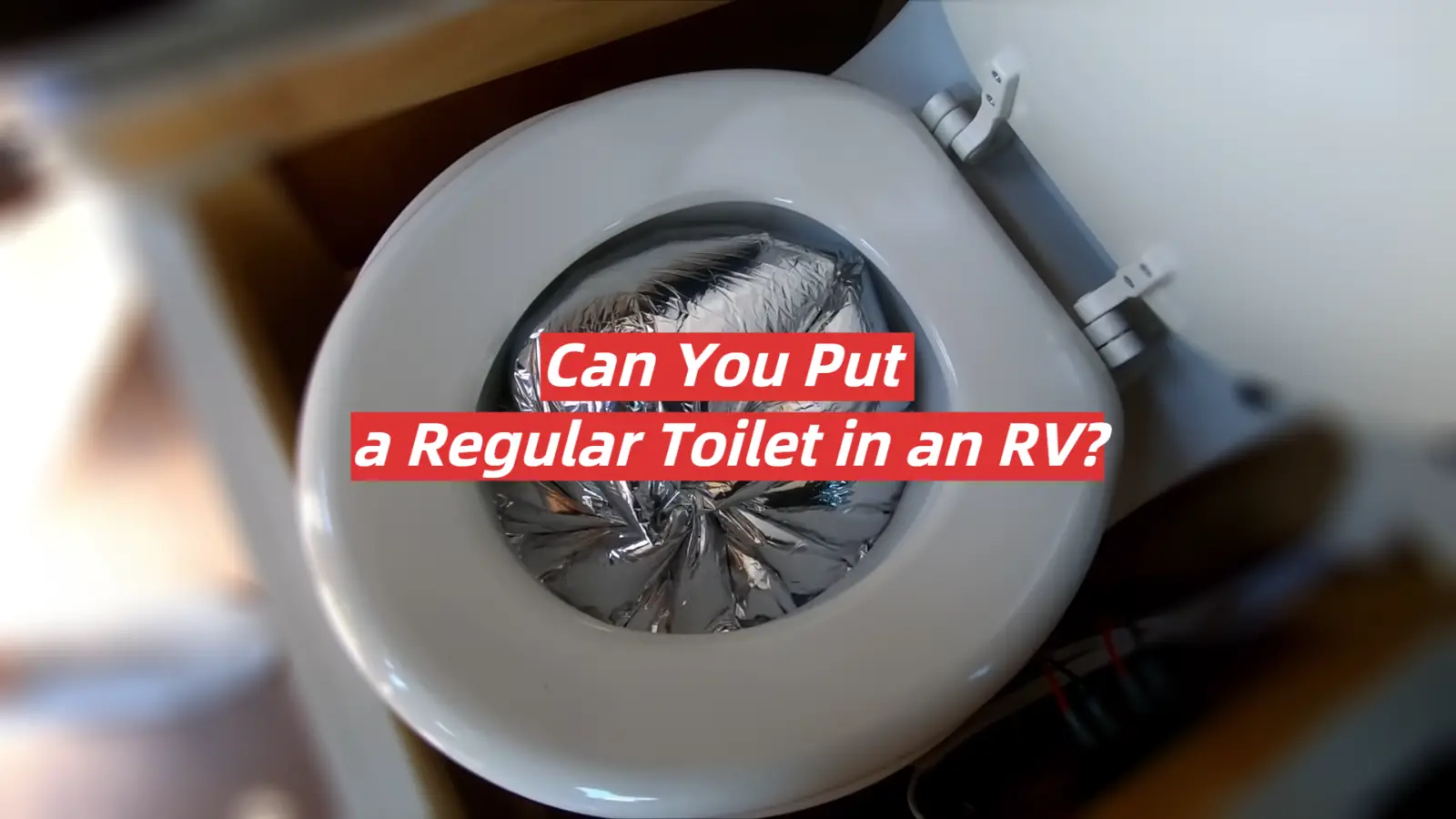




Leave a Reply